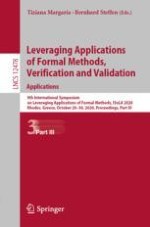2020 | OriginalPaper | Chapter
UTXO\(_{\textsf {ma}}\): UTXO with Multi-asset Support
Authors : Manuel M. T. Chakravarty, James Chapman, Kenneth MacKenzie, Orestis Melkonian, Jann Müller, Michael Peyton Jones, Polina Vinogradova, Philip Wadler, Joachim Zahnentferner
Published in: Leveraging Applications of Formal Methods, Verification and Validation: Applications
Publisher: Springer International Publishing
Activate our intelligent search to find suitable subject content or patents.
Select sections of text to find matching patents with Artificial Intelligence. powered by
Select sections of text to find additional relevant content using AI-assisted search. powered by
